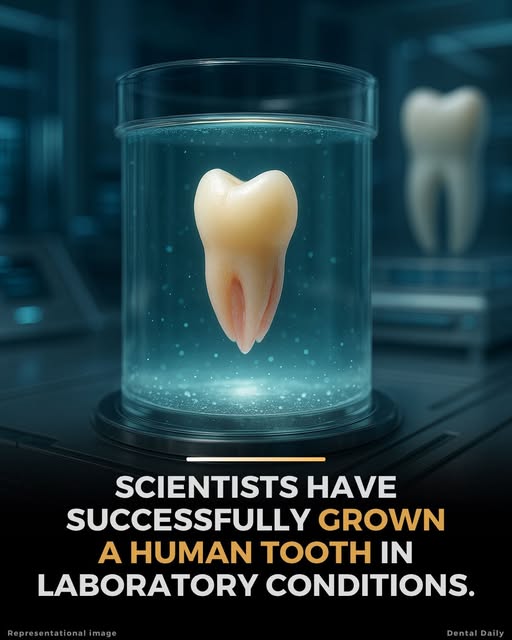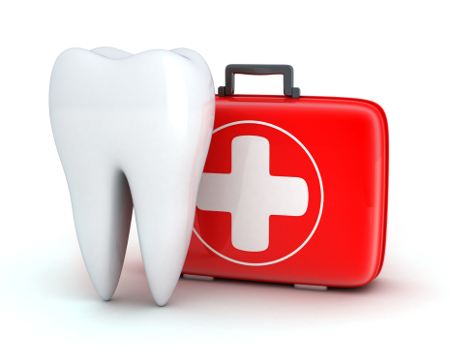From Pain to Perfect — We Care for Your Smile.
What if You Could Regrow a Lost Tooth? The Future of Dentistry is Here
Language :

Topics:
Forget Implants: The Future of Dentistry is Regrowing Your Teeth
For centuries, the core principle of dentistry has been repair and replacement. A cavity? Fill it. A broken tooth? Crown it. A lost tooth? Bridge it or implant a metal post into your jawbone.
But what if we could change the very nature of dentistry? What if, instead of replacing what's lost, we could regrow it?
This isn't science fiction. A landmark breakthrough from researchers at King’s College London is turning this dream into a tangible future, leveraging the power of bio-engineering to fundamentally change how we approach tooth loss.
The Breakthrough: Engineering a "Tooth Germ" in a Lab
The research team moved beyond traditional methods by focusing on the very origins of a tooth. They successfully engineered early-stage human tooth organoids—essentially, "mini-teeth" or "tooth germs"—in a lab setting.
Here’s how they did it:
-
The Blueprint: They started with human stem cells, the body's master cells with the potential to become any cell type.
-
The Scaffold: These cells were placed into a custom, bio-engineered hydrogel. This isn't just a gel; it's a precisely tuned 3-D matrix that mimics the natural environment of a developing jaw, providing the exact right physical and chemical cues.
-
The Growth: Within this engineered environment, the cells began to communicate and organize themselves, replicating key phases of natural tooth development. The researchers observed the formation of enamel (the hard, outer layer), dentin (the bony tissue beneath it), and pulp (the living core of the tooth).
In short, they didn't build a tooth; they grew one from the ground up, following nature's own blueprint.
Regeneration vs. Replacement: A Paradigm Shift
This is the core of why this discovery is so revolutionary.
-
Traditional Implants & Fillings are mechanical solutions. They are foreign materials (ceramic, metal, composite) placed into the mouth. While highly effective, they can wear down, loosen, or lack the natural shock absorption of a real tooth. They are a replacement, not a true restoration of biology.
-
The Lab-Grown Tooth is a biological solution. Because it's grown from your own cells, it aims to be fully integrated with your jawbone and surrounding tissues. The goal is a seamless, lifelong, and biologically-compatible tooth that functions and feels completely natural.
This approach, known as regenerative dentistry, shifts the focus from fixing problems to activating the body's own healing and regrowth potential.
The Role of AI and Quantum Computing in the Future
You might be wondering about the headline. While the initial breakthrough relies on advanced bio-engineering, the path to making this a routine clinical procedure will be paved by technologies like Artificial Intelligence (AI) and Quantum Computing.
-
AI's Role: The process of growing a tooth involves immense complexity. AI can analyze vast datasets from these experiments to predict the optimal hydrogel composition, stem cell conditions, and growth factors needed for success. It can accelerate the design cycle from years to months, creating personalized "recipes" for tooth regrowth tailored to an individual's biology.
-
Quantum Computing's Potential: Modeling molecular interactions and protein folding within the hydrogel scaffold is a task of staggering complexity for classical computers. Quantum computers, with their ability to simulate quantum-mechanical systems directly, could one day model the entire tooth development process with atomic-level precision. This would allow us to perfect the growth environment in silico before a single stem cell is ever used.
What Does This Mean for You? A Look at the Future
While this technology is still experimental and not yet ready for clinical use, it opens a door to a future we can now clearly imagine:
-
No More Metal in Your Mouth: The era of drills, implants, and metal posts could gradually give way to biologic solutions.
-
Treatment for Congenital Conditions: It offers hope for individuals born with missing teeth (agenesis).
-
True Healing from Trauma: Instead of a lifetime of implants, a person who loses teeth in an accident could have them regenerated.
The research from King's College London is a beacon, illuminating a path away from purely mechanical dentistry and toward a future where we don't just replace what's broken—we regrow it.
Source & Further Reading:
To explore the science behind this breakthrough, you can read the primary research publication:
-
Primary Source: "ACS Macro Letters" Journal - Engineering of Human Tooth Organoids Using a Bio-inspired 3D Matrix
-
PMID: 39532305
-
PMCID: PMC11656705
-
DOI: 10.1021/acsmacrolett.4c00520
-
To learn more about the field of regenerative dentistry, explore these resources:
-
National Institute of Dental and Craniofacial Research (NIDCR): Regenerative Medicine
-
International Association for Dental Research (IADR): Stem Cell Biology Research
-
Harvard School of Dental Medicine: The Future of Regenerative Dentistry




